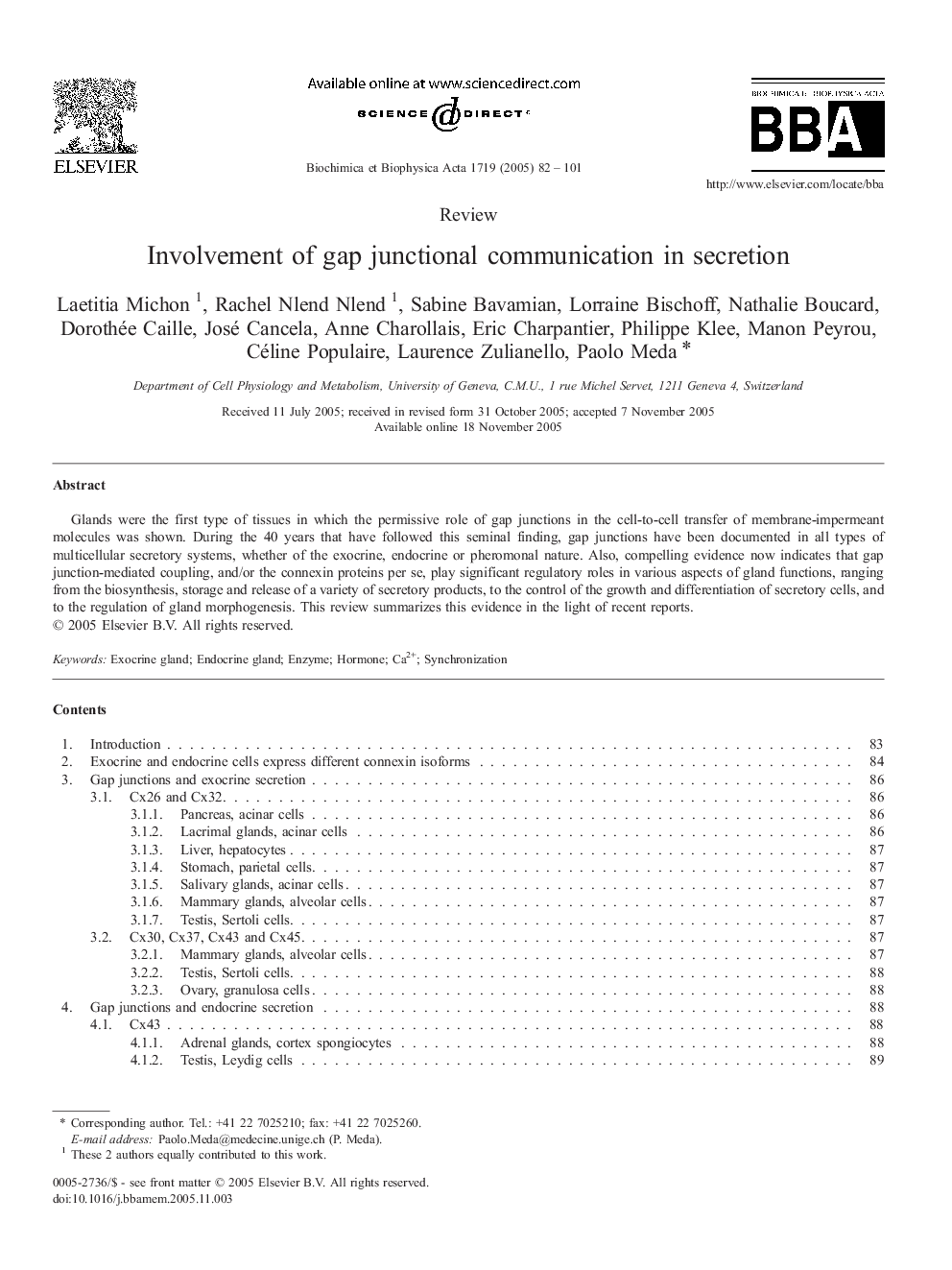| Article ID | Journal | Published Year | Pages | File Type |
|---|---|---|---|---|
| 9885120 | Biochimica et Biophysica Acta (BBA) - Biomembranes | 2005 | 20 Pages |
Abstract
Glands were the first type of tissues in which the permissive role of gap junctions in the cell-to-cell transfer of membrane-impermeant molecules was shown. During the 40 years that have followed this seminal finding, gap junctions have been documented in all types of multicellular secretory systems, whether of the exocrine, endocrine or pheromonal nature. Also, compelling evidence now indicates that gap junction-mediated coupling, and/or the connexin proteins per se, play significant regulatory roles in various aspects of gland functions, ranging from the biosynthesis, storage and release of a variety of secretory products, to the control of the growth and differentiation of secretory cells, and to the regulation of gland morphogenesis. This review summarizes this evidence in the light of recent reports.
Related Topics
Life Sciences
Biochemistry, Genetics and Molecular Biology
Biochemistry
Authors
Laetitia Michon, Rachel Nlend Nlend, Sabine Bavamian, Lorraine Bischoff, Nathalie Boucard, Dorothée Caille, José Cancela, Anne Charollais, Eric Charpantier, Philippe Klee, Manon Peyrou, Céline Populaire, Laurence Zulianello, Paolo Meda,
